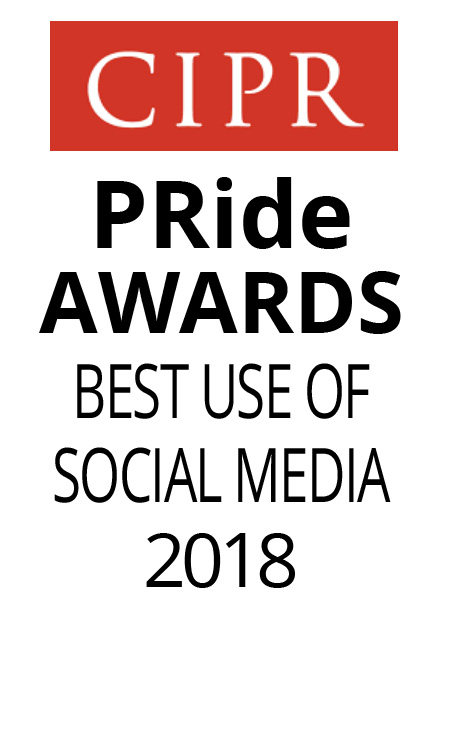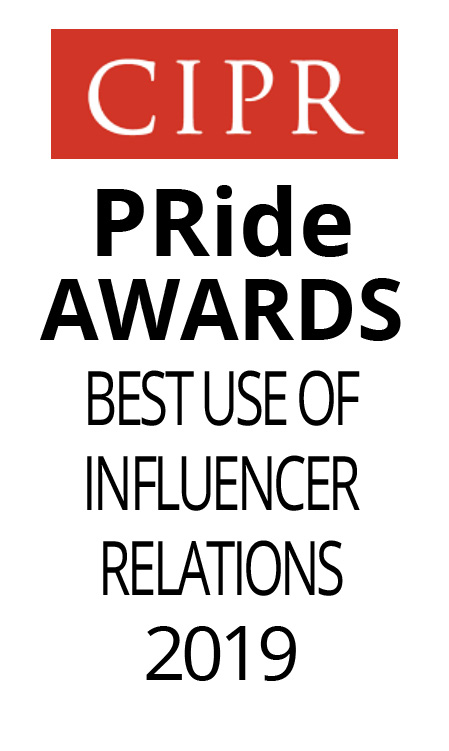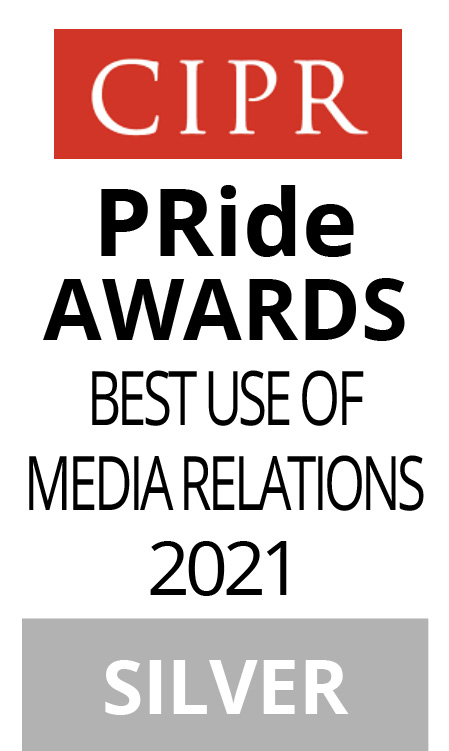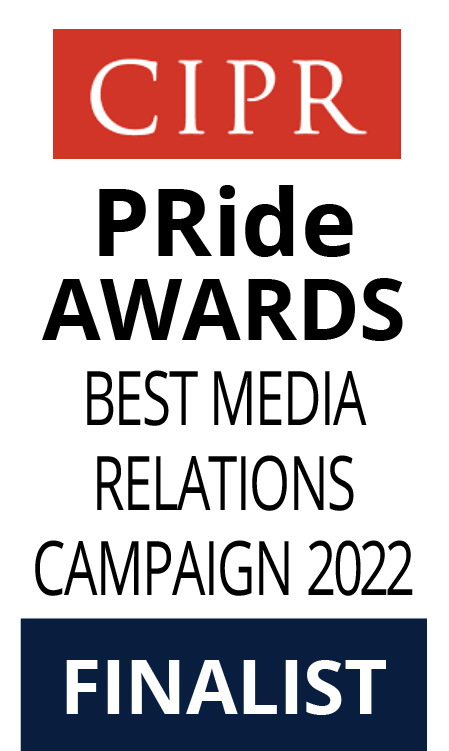Alex Aiken, when he was head of the UK Government Communication Service, said: “I believe that measurement is the most important communication discipline.”
There are some simple, easy measures you can put in place to evaluate your PR activity and I will outline them below.
But first a philosophical question you might ask. ‘Does measurement kill creativity in PR?’ Having just read ‘The Tyranny of Metrics’ by Jerry Z. Muller, I’m tempted to say yes.
The following paragraph from the book sums up the problem with measurement which applies to public organisations such as schools and hospitals and, in a much smaller way, PR agencies too:
“Primary schools, for example, have their tasks of teaching reading, writing, and numeracy, and these perhaps could be monitored through standardised tests. But what about goals that are less measurable but no less important, such as instilling good behaviour, inspiring a curiosity about the world and fostering creative thought?”
We work for many organisations in the education sector and are lucky to work for one school which, through teaching the International Baccalaureate Programme, specifically sets out to foster a curious mind and creativity, among other qualities, in addition to the basic 3 R’s among its students. So I know that with the right approach, creativity and measurement can sit comfortably together – in other words, measurement need not kill creativity.
Creativity and measurement can go together
At Twelve we are absolutely wedded to the importance of creativity in PR – after all, the ‘Twelve ideas’ concept, where a new, good idea is presented every month to our clients, is a core part of our service offer.
I don’t see any conflict between creativity and measurement, in fact I think creativity without measurement is pure vanity. Our business as a PR agency is to help other businesses and organisations thrive, and there are always tangible ways to measure this.
A brilliant creative idea needs to do something, for example increase footfall, achieve sales, build a new business pipeline and so on.
Tips on how to set up a useful PR measurement report.
The most important thing is to make sure that your reporting is ‘light touch’ but effective:
- Requires no more than 10 per cent of your own or your agency’s time or budget to produce.
- Can be understood and appreciated at a glance.
- Can be repeated each month or at regular intervals, such as after each campaign.
Measuring PR activities and outcomes
Measure activities, but make sure you have more information on outcomes.
Activities
Keep a record of what your PR agency is doing for you. Ultimately you don’t want a long list of activities, because what really matters to you are the outcomes. However, depending on what your agency has been tasked to do, a summary each month is a useful record.
For example, if it’s media relations, have a summary or list of stories or news items that have been distributed. You need to know how many have gone out to assess your success rate; to either enjoy it or improve on it.
If the agency organised a series of events, list them. Outcomes will, in this case, be attendance related: prospects, face-to-face meetings secured etc.
If your agency is creating content, then ensure you have a list of that content, when created and when hosted. But the key thing you need to measure is outcomes.
What PR outcomes should you measure?
PESO
Carefully consider the PESO model from Gina Dietrich, which is an excellent framework, shown below, but don’t use it rigidly.
Always aim to find the most simple way to measure what really counts for your business.
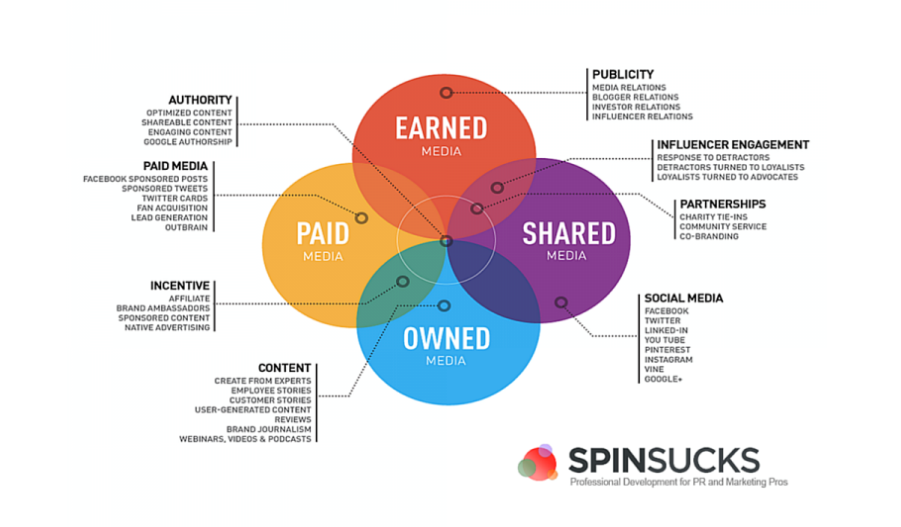
Reproduced from https://amecorg.com/2016/10/how-to-measure-communication/ Gina Dietrich www.spinsucks.com
Paid or earned
The concept of paid and earned is good, so use this as a basic definition to classify any coverage from media relations. As the number of earned media channels such as national newspapers is diminishing, then achieving a result in them is especially valuable and worth noting.


Messages
You may have pages and pages of content or copy published somewhere but it is of no value, or worse, damaging, if it is saying the wrong thing. Have some form of assessment of your messages and use the same formula each month.
Google analytics
You could drown in data from Google. Cut to the chase. We use a framework devised by our friends at Zanzi called a RACE report.
Sample PR digital metrics in a RACE Report
The report is based on answering key questions about the value of your PR activity.
- Who do you REACH?
- How do the ACT when they get there?
- How well do you ENGAGE with them?
- How many do you CONVERT?
You can see the heading for each element below. The hardest section to complete is the conversion chart, because in an ideal world this will contain your internal sales data. This is the most important measurement of all. If you have set up goals on your website then this should be a key metric in your conversion table.
Sometimes we use CONTACT data from e -shots if sales data is hard to track down.




Measuring influencer activity
Of course you can create any report you want. Instagram for example isn’t shown in the above table but if that’s what you’re using rather than LinkedIn, switch it round or add it in.
These are just a few effective ways in which you can set up internal PR measurement systems.
There are a host of external systems you can buy such as Kantar Precise for media content or Trackr for measuring Influencer activity.
You will almost certainly need to use an external service to capture and collate your media monitoring if you have a significant PR programme in place. A quick Google search will bring up a list of these.
Measuring your corporate reputation or values among stakeholder
If reputation management is a key, specific aspect of your agency’s role, then pre and post measurement of what your reputation actually is will be important. Measuring brand values, corporate reputation, perceptions among stakeholders etc., usually requires a third-party service.
If you would like to know which ones we use or would like to achieve PR results that are really worth measuring, give me a call or drop me an email.
Nicky Smith 01608 495014 nicky@twelvepr.co.uk




